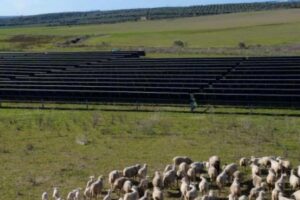Making Informed Choices for a Sustainable Future

The world’s insatiable demand for energy has prompted a diverse array of energy sources to power our homes, industries, and vehicles. Each energy source comes with its own set of advantages and drawbacks, and understanding the pros and cons of all energy sources is crucial for making informed decisions about our energy future. In this comprehensive article, we’ll explore the benefits and challenges associated with various energy sources, from fossil fuels to renewables and everything in between.
Fossil Fuels
Pros:
1. Reliable and Readily Available
Fossil fuels, including coal, oil, and natural gas, have been the primary energy sources for many decades, offering a consistent and easily accessible energy supply fro mankind.
2. Energy-Dense
Fossil fuels are energy-dense, meaning a small amount can produce a substantial amount of power.

Due to the war in Ukraine, Europe reactivated some of its old coal power plant, image source: Unsplash
Cons:
1. Greenhouse Gas Emissions
The burning of fossil fuels is a major contributor to greenhouse gas emissions, driving climate change and air pollution.
2. Finite Resources
Fossil fuels are non-renewable resources, and their depletion is inevitable.
Renewable Energy Sources
Pros:
1. Clean and Sustainable
Renewable sources like solar, wind, and hydro power generate electricity with minimal environmental impact and are virtually inexhaustible.
2. Reduces Carbon Footprint
By utilizing renewables, we can significantly reduce our carbon emissions, combat climate change, and improve air quality.
Cons:
1. Intermittency
Some renewable sources are intermittent and dependent on weather conditions, which can make power generation inconsistent.
2. Initial Costs
The installation and setup of renewable energy systems can be expensive, although the long-term savings often outweigh these costs.
Let’s check them in detail.
Conventional energy sources
1. Nuclear Energy:
Pros:
2. Low Greenhouse Gas Emissions
Nuclear power produces electricity with minimal carbon emissions, making it a low-carbon energy source.
3. Reliable and Efficient
Nuclear plants can provide a consistent and substantial power supply.

Nuclear power plants consume huge amounts of water, image source: Unsplash
Cons:
1. Radioactive Waste
Nuclear energy produces long-lived radioactive waste that must be stored and managed securely.
2. Safety Concerns
Accidents, like the Chernobyl and Fukushima disasters, have raised concerns about the safety of nuclear power.
2. Natural Gas
Pros:
1. Abundant
Natural gas is a relatively abundant fossil fuel, offering a stable energy supply.
2. Lower Carbon Emissions
Natural gas is cleaner than coal or oil and produces fewer greenhouse gas emissions.
Cons:
1. Fracking Concerns
The extraction process, such as hydraulic fracturing or “fracking,” raises environmental and health concerns.
2. Non-Renewable
Natural gas is still a finite resource, and its consumption contributes to climate change.
3. Coal
Pros:
1. Readily Available
Coal is abundant in many regions and has historically been a reliable energy source.
2. Energy-Dense
It provides a high energy output per unit of weight.
Cons:
1. High Greenhouse Gas Emissions
Coal combustion is a major contributor to carbon emissions, leading to climate change.
2. Air Pollution
Coal emissions contain pollutants harmful to both human health and the environment.
4. Oil
Pros:
1. Versatile
Oil serves as a crucial energy source for transportation, heating, and electricity generation.
2. High Energy Density
It is a highly energy-dense fuel, making it efficient for various applications.
Cons:
1. Environmental Impact
The extraction, transport, and combustion of oil can result in spills, air pollution, and habitat disruption.
2. Finite Resource
Like other fossil fuels, oil is finite and will eventually run out.
Alternative energy sources
1. Hydroelectric Power
Pros:
1. Renewable and Reliable
Hydroelectric power plants use the flow of water to generate electricity, providing a steady and clean power source.
2. Zero Greenhouse Gas Emissions
Hydropower is emission-free and doesn’t contribute to climate change.

Hydroelectric power plant using a massive dam, image source: Unsplash
Cons:
1. Environmental Impact
The construction of dams and reservoirs can have significant ecological consequences, including habitat disruption.
2. Limited Suitable Sites
Not all locations are suitable for hydropower generation, limiting its widespread use.
2. Biomass Energy
Pros:
1. Renewable and Versatile
Biomass, which includes organic materials like wood and agricultural waste, can be burned for heat or converted into biofuels.
2. Carbon Neutral
Biomass is considered carbon-neutral because the carbon released during combustion is offset by the carbon absorbed during the plant’s growth.
Cons:
1. Air Pollution
The combustion of biomass can emit pollutants and particulate matter, affecting air quality.
2. Land and Water Use
Large-scale biomass production can lead to land and water resource conflicts.
3. Geothermal Energy
Pros:
1. Clean and Reliable
Geothermal energy harnesses heat from the Earth’s core, providing a consistent and clean energy source.
2. Low Operating Costs
Once a geothermal plant is built, its operational costs are relatively low.
Cons:
1. Limited Locations
Geothermal energy is viable primarily in regions with geothermal activity, limiting its global applicability.
2. Initial Costs
Setting up geothermal plants can be capital-intensive.
4. Wind Energy
Pros:
1. Renewable and Abundant
Wind energy harnesses the kinetic power of the wind, a virtually limitless resource.
2. Low Greenhouse Gas Emissions
Wind turbines produce electricity with minimal carbon emissions.

Wind farm at high altitude in China, image source: Unsplash
Cons:
1. Intermittent
Wind energy generation depends on wind speed and is intermittent, requiring energy storage solutions.
2. Environmental Impact
Wind turbines can have visual and ecological impacts on the landscape, including bird and bat fatalities.
5. Solar Energy
Pros:
1. Abundant and Sustainable
Solar energy is harnessed from the sun, providing a virtually limitless source of power.
2. Clean and Quiet
Solar panels produce electricity silently and without emissions.
Cons:
1. Intermittent
Solar energy generation varies with weather conditions, time of day, and season, necessitating energy storage solutions.
2. Initial Costs
The upfront cost of solar panel installation can be high, but incentives and long-term savings make it a wise investment.
6. Tidal Energy
Pros:
1. Predictable and Renewable
Tidal energy is generated by the regular rise and fall of tides, providing a consistent and renewable source.
2. Minimal Greenhouse Gas Emissions
Tidal energy is a low-carbon option with limited emissions.
Cons:
1. Location-Specific
Tidal energy is feasible primarily in coastal areas with significant tidal fluctuations.
2. Environmental Impact
Tidal energy installations can affect marine ecosystems and local shorelines.
7. Wave Energy
Pros:
1. Renewable and Abundant
Wave energy is derived from the motion of the ocean’s surface caused by wind, and with over 70% of the Earth’s surface covered by oceans, it’s a nearly limitless and renewable resource.
2. Low Greenhouse Gas Emissions
Generating electricity from wave energy produces minimal greenhouse gas emissions, making it an environmentally friendly energy source that contributes to combating climate change.
3. Predictable and Consistent
Waves are highly predictable, as they are influenced by the consistent and periodic patterns of wind and tides. This predictability allows for efficient energy generation and grid integration.
4. Low Visual Impact
Wave energy devices can be placed offshore, often below the water’s surface, reducing their visual impact compared to some other forms of renewable energy, like wind turbines.
Cons:
1. Environmental Impact
The installation and operation of wave energy devices can have ecological consequences, including habitat disruption, the potential for marine life entanglement, and changes in wave patterns that may affect coastal areas.
2. High Initial Costs
Developing, testing, and installing wave energy technology can be expensive. It requires significant upfront investments in research and development, as well as infrastructure.
3. Location-Specific
Wave energy is most feasible in regions with strong and consistent wave patterns, limiting its global applicability.
4. Competition with Other Uses
Offshore areas suitable for wave energy may also be utilized for other purposes, such as fishing, shipping, and tourism. Balancing these competing interests can be complex.
5. Variable Energy Output
The energy output of wave devices can fluctuate due to changes in wave height and frequency, which may require energy storage solutions for grid stability.
8. Biomethane
Pros:
1. Renewable
Biomethane is produced from organic materials, making it a renewable energy source.
2. Low Emissions
It generates lower carbon emissions compared to traditional natural gas.
Cons:
1. Methane Emissions
Biomethane production can result in methane leaks, contributing to greenhouse gas emissions.
2. Resource Intensive
Biomethane production requires land, organic waste, and processing facilities.
Conclusion
In summary, our energy landscape is a complex web of options, each with its own set of advantages and challenges. Transitioning towards cleaner and more sustainable energy sources is imperative for combating climate change and preserving our planet’s future. By carefully considering the pros and cons of each energy source, we can make informed choices that align with our environmental and energy goals, ensuring a more sustainable and resilient energy future.





